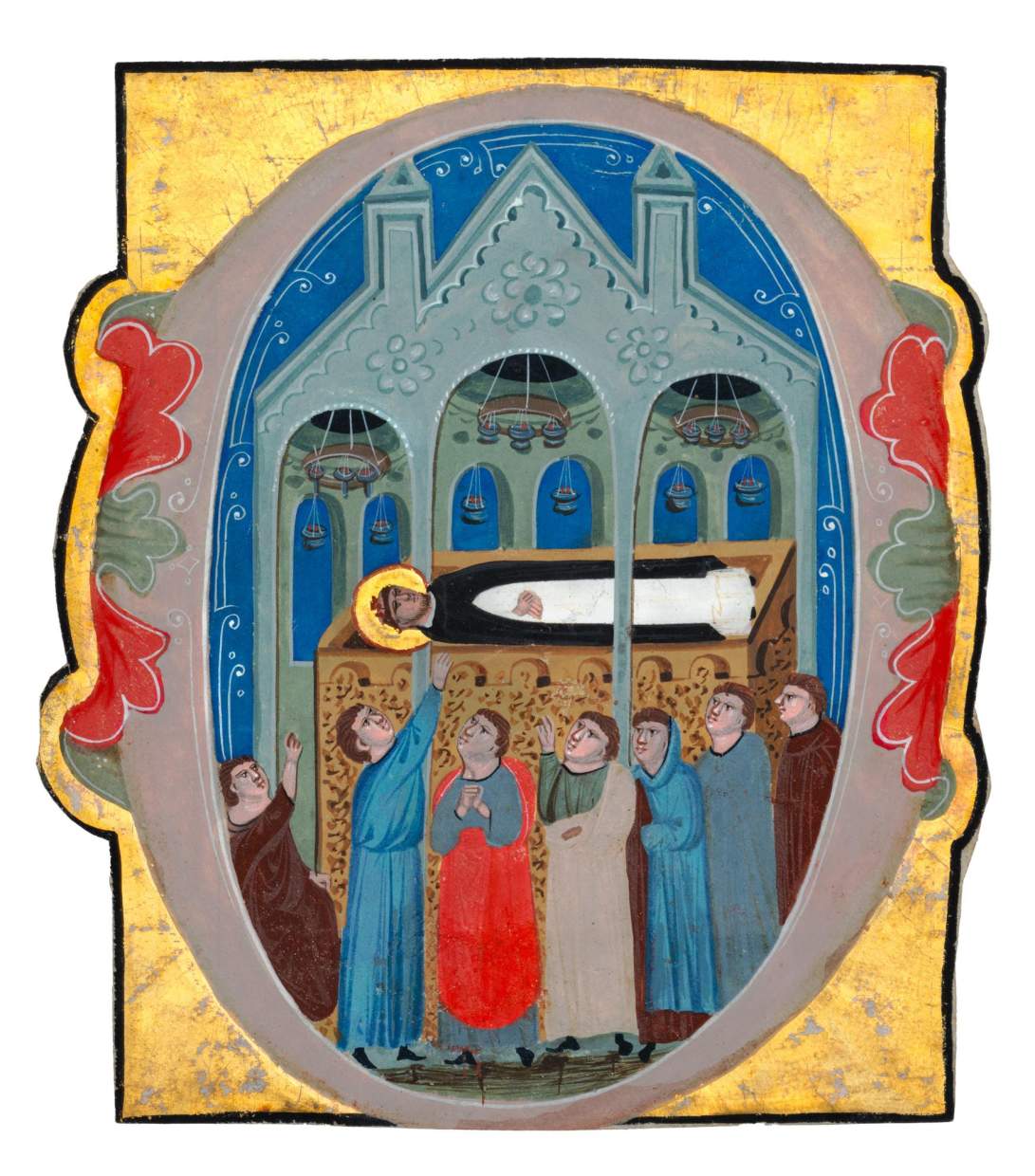

Presentation in the Temple, cutting of an Antiphonary leaf in a historiated initial A, illuminated by the Master of the Antiphonaries of the cathedral of Pavia (Giustino del fu Gherardino da Forlì?).
Hide caption
This intriguing miniature stands out due to its unusual iconography. Depicting Saint Peter of Verona, a 13th-century Dominican preacher, inquisitor, and martyr, typically portrayed at the moment of his violent martyrdom with a sword or knife embedded in his skull. Here, Saint Peter is shown lying on his tomb. He is dressed in his Dominican habit with his head wound clearly visible. Above him spans an elaborate Gothic canopy with numerous hanging-lamps. This serene and reverent representation contrasts sharply with the more violent imagery commonly associated with his martyrdom.
Before his tomb, seven lay pilgrims, identifiable by their attire, are depicted lamenting or praying to the dead saint. Their presence highlights the veneration of Saint Peter, whose body was interred in the church of Sant’Eusorgio in Milan. The saint was canonised just a year after his death — one of the fastest canonisations in Church history.
The illumination is attributed to the Master of B 18, named after a manuscript of the Institutiones of Justinian, and a leading figure in the monumental series of choir books for the Dominican church of San Domenico in Bologna. This extensive project, spanning nearly two decades from circa 1307 to 1324/26, involved the creation of at least fourteen imposing liturgical manuscripts. The surviving manuscripts, held in the library of San Domenico, are exemplary of early 14th-century liturgical illumination from Emilia and provided a prototype for subsequent choir books for Dominican and other Bolognese religious communities.
This miniature not only showcases the trailblazing artistry of its creator but also serves as a historical document reflecting the devotional practices and artistic endeavors of the Dominican order in the Emilia region. Its unique iconography and historical context make it a significant piece within the broader narrative of Bolognese manuscript illumination.



